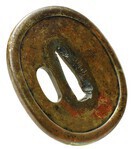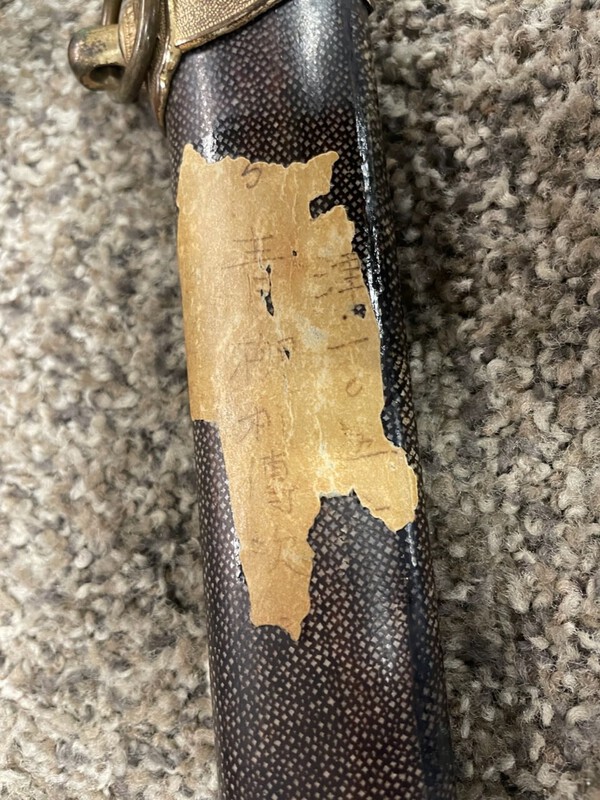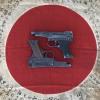All Activity
- Past hour
-
The kabuto with blue lacing is in my collection.
- Today
-
Thanks for posting Piers, controlling the number of weapons in an attempt to prevent rebellion makes perfect sense. My question to everyone remains, what did "they" (the Japanese, regardless of position) do with them all, scrapped or not? For those which were scrapped, how was this accomplished? Were they melted down, were they cut up? Where were the pieces disposed, land or sea? Are there and items found in Japan that may have made with scrap tamahagane in antiquity? One would imagine that perhaps the steel was later used in the manufacture of firearms, is this possible? Has anyone ever made an attempt to estimate the number of just swords produced over 800 years because we have to be talking about lots of metal compared to what is left in the modern day. When you add in yari and naginata......thats seems like a lot of steel
- Yesterday
-

If this didn't bother you
Rivkin replied to lonely panet's topic in Auctions and Online Sales or Sellers
If only we had Verdi to honor the tragedy of "who has dislikened me". -
The game theory on this is interesting...
-
國友弥兵衛尉金次 Kunitomo Yahei no Jo Kanetsugu(?) Interestingly a Kunitomo smith in … Is that Settsu no Kuni Ju, Osaka? 鍛巻張 Kitae/Tan makibari barrel forged with (spiral) metal binding(s)
-
-
If this didn't bother you
nulldevice replied to lonely panet's topic in Auctions and Online Sales or Sellers
That was truly a wonderful blade to see last year! -
If this didn't bother you
Jacques replied to lonely panet's topic in Auctions and Online Sales or Sellers
When you shorten a nakago, you only file one side, whether it's signed or not. -
If this didn't bother you
Jacques replied to lonely panet's topic in Auctions and Online Sales or Sellers
I think i know whom and that makes me laughing. -
@Rawa I’m not sure; I need to do some studying and reading. I’ll post over in the Gunto thread on it with more photos. It’s a possible purchase from a pawn shop.
-
Thank you very much @Conway S! I know it’s a bit gone but would you be able to make any of this tag on the saya out?
-
If this didn't bother you
lonely panet replied to lonely panet's topic in Auctions and Online Sales or Sellers
jacqs, iv noticed some member always gives you this regarless of what you write, probably some sour puss that has got a bee in there bonnet -
Is this stainless steel?
-
Almost in all cases in the world where you have a sword supposedly taken from some defeated general, if there is detailed information about it, turns out by the time commanders decided "oh, it would be nice to collect a few blades to present them as sign of our victory", everything slightly worthy has already been cleaned out (Tipu Sultan's swords being a good example) and the only way to obtain a presentable piece was either from a guarded and locked arsenal (if such existed) or you simply had to buy one from one of the traders who followed the army. It is actually not at all uncommon that the bought sword was clearly not carried by the enemy - but was simply the nicest one a seller had on hand. Nice koshirae with a long sword would not remain sticking around from the ground for long. Especially since it has not been really a Japanese tradition to present defeated men's sword (though surrendering a sword was normal), you could keep it for yourself, what you had to do is cut off the head, take the helmet, and then present the pair. What you see consistently in Nanbokucho period letters is if you wanted something more than participation award you had to either charge first or kill someone important, and it had to be witnessed. So you waited until you see someone on your side in a fancy helmet (potential witness) and then hoped to get a fancy helmet from the other side. So for a leader there was an obligation to wear a fancy helmet or otherwise people would simply not move. Conversely, everyone with a collected helmeted head insisted this was enemy's general, so many well known people were "killed" over and over, sometimes even displayed headwise at the same time on different bridges. And people committed to taking a head in battle would often paint their faces or their hair to make it easier for witnesses to confirm. "Kabuki" has some very unusual roots, but again you actually see this tradition now and then in other parts of the world as well. Disposal of bodies and final scavenging was however a different matter. Something until rather late if organized, done by "unclean" castes, tanners and others who lived next to rivers in larger cities. They also served as executioners during Nanbokucho, as pre-Muromachi it was considered an unclean, non-Buddhist profession. They also prepared heads for display, supposedly the neck had to be arranged in a certain way. There are couple of nice Ph.d. works on the subject - thankfully Japanese is one of a few traditions that is quite document and literature based. By comparison if you take Persian or Ottoman or Indian sources, usually it simply ends to great confusion.
-
Michael, It’s signed Tenshozan Tanrenjo saku and dated a lucky day in February 1942. Lots of information on this forge in Mal Cox’s naval sword articles in the download section.
-

If this didn't bother you
Rivkin replied to lonely panet's topic in Auctions and Online Sales or Sellers
An interesting blade which is easy to appreciate. One suspicion which is hard to confirm without seeing it in 3D there could have been a signature on the nakago... orikaeshi mei or something else. This was cleaned out. Might have been "Kuniyuki", since it does remind a bit. -
Kaigunto230 started following Type 97 Kaigunto Translation
-
-
Sorry about the lack of pictures. I actually took some more but they didnt seem to upload. ill add them now.
-
The stereograph pic is a street-side sword salesman during the Edo period. Just another possiblity for the disposition of collected swords. The pic is from a book called Photography in Japan found here (I apologize if this has been shared before): https://archive.org/details/photography-in-Japan-1853-1912-by-terry-bennett-z-lib.org The book has many pics of samurai who wanted a record of their kit prior to the Meiji restoration and ban on samurai/sword carrying. John C.
-
Toryu2020 started following If this didn't bother you
-

If this didn't bother you
Toryu2020 replied to lonely panet's topic in Auctions and Online Sales or Sellers
Does this bother you? BIZEN MORISUKE 備前守助 - NIHONTO



















